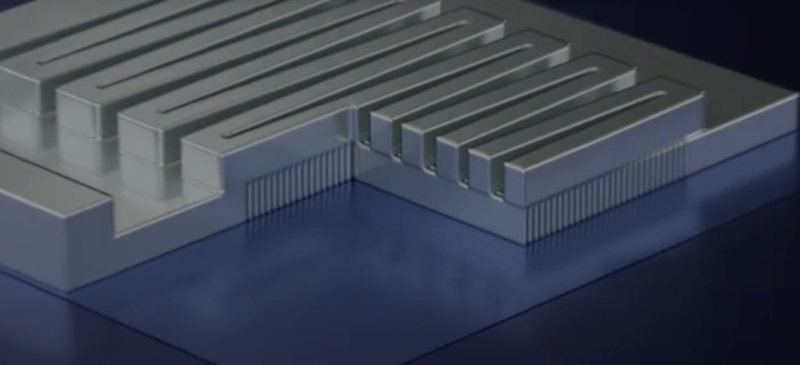Researchers demonstrate in-chip water cooling
Ars Technica » Scientific Method 2020-09-09

Enlarge / A hierarchy of channels keeps coolant flowing without requiring high pressures.
As desktop processors were first crossing the Gigahertz level, it seemed for a while that there was nowhere to go but up. But clock speed progress eventually ground to a halt, not because of anything to do with the speed itself but rather because of the power requirements and the heat all that power generated. Even with the now-common fans and massive heatsinks, along with some sporadic water cooling, heat remains a limiting factor that often throttles current processors.
Part of the problem with liquid cooling solutions is that they're limited by having to get the heat out of the chip and into the water in the first place. That has led some researchers to consider running the liquid through the chip itself. Now, some researchers from Switzerland have designed the chip and cooling system as a single unit, with on-chip liquid channels placed next to the hottest parts of the chip. The results are an impressive boost in heat-limited performance.
Feeling the heat
Part of our issue with getting heat out of a chip is that it usually involves multiple connections: from the chip to the chip packaging and the chip packaging to a heat sink. While steps can be made to improve these connections, there's an inefficiency to them, which adds up to limit the heat we can extract from the chip. This is true for the liquid cooling systems in current use, which use the liquid to replace the metal heat sink. While it might be possible to place the chip directly into a heat-conductive liquid, that liquid has to be an insulator and not undergo any chemical reactions with electronics components—both hurdles that water fails to clear.